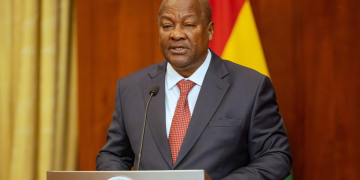The reported rise in human metapneumovirus (HMPV) infections in China has raised public concerns, with crowded hospital footage circulating on social media and fears of a Covid-like outbreak.
However, health experts maintain that the situation does not warrant alarm, emphasizing that HMPV is a known virus with predictable seasonal behavior.
Surge in Infections and Public Anxiety
Chinese health authorities recently reported an uptick in respiratory illnesses, including HMPV, among children under 14.
This announcement coincided with images of overwhelmed hospitals, sparking speculation about the virus spreading internationally.
The timing—on the fifth anniversary of the first reported Covid-19 case in Wuhan—has heightened public sensitivity.
However, leading scientists insist there’s no comparison between the two viruses, nor is there evidence to suggest that HMPV poses an imminent global health crisis.
Understanding HMPV
HMPV, first identified in 2001, is a common respiratory virus that causes mild symptoms in most people, such as coughs, congestion, and fever. Severe cases are primarily limited to infants, the elderly, and individuals with compromised immune systems.
Read Also: Energy transition turmoil: Mahama administration faces immediate fuel reserve challenges
Professor Andrew Pollard of the Oxford Vaccine Group described the virus as part of the “winter pressure” that healthcare systems routinely face.
“For most people, it’s a cold-like illness. Only in vulnerable groups does it become severe,” he said.
Echoing this, Professor John Tregoning of Imperial College London stated, “HMPV is not new.
It behaves similarly to flu and RSV, and the same precautions—handwashing, ventilation, and isolation when unwell—apply.”
Increased Detection, Not an Unprecedented Outbreak
Experts attribute the current rise in HMPV diagnoses in China to heightened awareness and improved detection methods rather than a significant mutation or change in the virus’s behavior.
“We’re diagnosing more cases because testing has improved,” said Professor Paul Hunter from the University of East Anglia.
“Severe cases are rare and mostly self-limiting.”
China’s health authorities have initiated a pilot program to track pneumonia of unknown origins, enhancing case reporting and laboratory coordination.
They’ve assured the public that the virus is spreading on a smaller scale compared to previous years.
Comparisons to Covid Are Misguided
Experts are keen to dispel fears of a Covid-like scenario. Unlike SARS-CoV-2, HMPV has long been circulating among humans, and its genetic diversity and epidemiology are well understood.
“This is not like Covid, where the virus was new to humans and spread rapidly due to a spillover event,” explained Professor Jill Carr, a virologist at Flinders University.
“We already have diagnostic tools and an understanding of HMPV’s impact on the body.”
Professor Sanjaya Senanayake from the Australian National University emphasized that while vigilance is necessary, the current spike is likely a seasonal trend.
“This could be akin to a bad flu season,” he said, adding that data-sharing by China is vital for monitoring the situation and guiding vaccine development.
WHO Monitoring the Situation
The World Health Organization (WHO) has not classified the rise in HMPV cases as a global health emergency but continues to monitor the situation.
For now, experts agree that while HMPV can cause severe illness in certain groups, the virus’s behavior does not indicate an immediate threat to global health.
Public health efforts remain focused on preventive measures, timely reporting, and vaccine research to manage its impact.
A Reassurance to the Public
As concerns circulate online, scientists urge calm and reiterate the importance of context.
The increase in HMPV cases, while significant, falls within the predictable patterns of seasonal respiratory illnesses.
With established testing methods and ongoing research into vaccines, the global health community is better equipped than ever to address the challenges posed by HMPV.



























